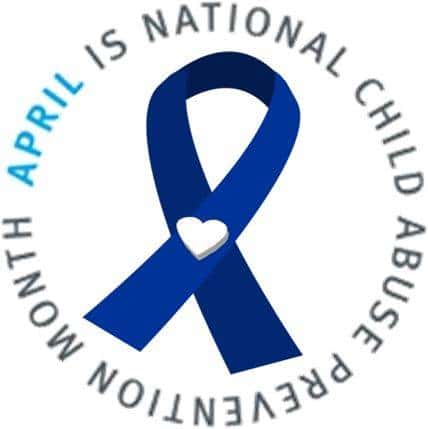Awareness of Child Abuse…
Friends, April is Child Abuse Awareness & Prevention Month.
Unfortunately, many adults are squeamish at the mention of child abuse. Certainly, adult victims of Adverse Childhood Experiences are reluctant to share or revisit their awful memories. Perpetrators of child abuse keep their secrets hidden deep inside. The result is there is little real awareness of the causes and extent of child abuse, how to recognize it, and what any individual might be able to do if confronted by it.
In Williamson County, where I live, there is a collaborative effort between organizations and professionals drawing attention to child abuse awareness and prevention called “GO BLUE.” The goal of the GO BLUE committee is to amplify voices and impact during the month of April for children impacted by abuse in Williamson County and in counties around the country.
In the spring of 1989, a grandmother named Bonnie Finney took a stand against child abuse in Norfolk, VA. She tied a blue ribbon on the antenna of her minivan in remembrance of her late grandson, and as a signal to her community that child abuse was a devastating plague.
The spirit of her blue ribbon grew and inspired a statewide community-based effort to prevent child abuse in every town, every community, and every county. Bonnie Finney started a revolution. The revolution I am asking all of us to hold hands and be a part of.
Thank you, Bonnie Finney. Thank you, Williamson County Child Advocacy Center.
We can stand together in simple, but important ways, like my friend Claire. Claire signed up to be a CASA (Court Appointed Special Advocate) volunteer. Imagine the experience of children who are removed from their home, their family, their siblings, and everything they know and care about. They find themselves in a world filled with social workers, lawyers, judges, and courtrooms where life-altering decisions are made on their behalf.
Fortunately, children in Claire’s county can have a court-appointed, trained, and committed volunteer advocate who will ensure that each child’s individual needs remain a priority in an overburdened child welfare system. Claire will serve as “guardian ad litem,” with the responsibility to make informed recommendations back to the judge about a child’s best interest. It was the guardian ad litem that stood by our son and daughter-in-law as they traversed the foster care system for eighteen months, eventually adopting our fourth grandchild. What an important role.
Thank you, Claire.
Then, there is my high school alum Allie. She and her three small children volunteer for Generation SERVE. Founder of Generation SERVE, Marissa Vogel, started not only an organization, but a movement. In 2009 when her daughters were 4 and 6, Marissa searched for opportunities to get them involved in service. She understood that if her children were to grow into adults who cared about making a difference, they needed to learn to volunteer to truly understand the impact they could have on others. Marissa wanted to make sure that they, and other young volunteers, did real work that mattered. When she could not find these opportunities, she took it into her own hands and founded “Helping Hands” which later grew into Generation SERVE.
Allie and her three young children regularly volunteer, through Generation SERVE, at the Rainbow Room. The Rainbow Room is a 24/7 resource center, located within their local Child Protective Services (CPS) offices. In the Rainbow Room, CPS caseworkers can get supplies for children who are victims of abuse or neglect, and provide them with clothing, school supplies, diapers and much, much more. These supplies kept my son and daughter-in-law going while fostering and caring for our now grandson. They still do. Allie is exposing her children to the power of serving others touched by abuse or neglect. How brave. How important.
Thank you, Allie. Thank you, Marissa.
And, then, there is Charles B. Nemeroff M.D., Ph.D., chair and professor with the Department of Psychiatry and Behavioral Sciences at The University of Texas at Austin Dell Medical School. He is also the co-director of the Center for Psychedelic Research and Therapy, and directs the Institute for Early Life Adversity Research within the Department of Psychiatry and Behavioral Science as part of the Mulva Clinic for Neurosciences.
His research is focused on the pathophysiology of mood and anxiety disorders with a focus on the role of child abuse and neglect as a major risk factor. He has conducted research on the role of mood disorders as a risk factor for major medical disorders including heart disease, diabetes, and cancer. He has published more than 1,100 research reports and reviews, and his research is currently supported by grants from the National Institute of Health.
While I was in Miami a month or so ago taking his Master Class on Psychopharmacology, I gleaned he also recently became the co-director of the Texas Childhood Trauma Research Network. This is the big stuff.
Created by the 86th Texas Legislature, the Texas Child Mental Health Care Consortium (TCMHCC) leverages the expertise and capacity of the health-related institutions (HRIs) of higher education to address urgent mental health challenges and improve the mental health care system for children and adolescents in the state of Texas. TCMHCC was provided $90 million for the FY 2019 -2021 biennium in support of four initiatives, one of which is research. The goal of this component is to examine highly impactful research areas in child mental health, where great need exists, and where health services research can make a significant contribution to child mental health care where aligned with the statewide Behavioral Health Strategic Plan. The Texas Legislature has continued to support TCMHCC with follow-on funding.
As we have discussed together these past eighteen plus months, children and adolescents who have been exposed to one or more traumatic events over the course of their lives can develop reactions that persist and affect their daily lives after the events have ended. Traumatic reactions can include a variety of responses, such as intense and ongoing emotional upset, depressive symptoms or anxiety, behavioral changes, difficulties with self-regulation, problems relating to others or forming attachments, regression, or loss of previously acquired skills, attention and academic difficulties, nightmares, difficulty sleeping and eating, and physical symptoms, such as aches and pains. Older children may use drugs or alcohol, behave in risky ways, or engage in unhealthy sexual activity.
The purpose of this research repository Dr. Charles Nemeroff is heading, is to develop a system, called the Childhood Trauma Research Network, to gather information from youth and their caregivers to better understand how to measure, treat, and prevent the after-effects of trauma exposure in youth. Through this Childhood Trauma Research Network, researchers will develop a Network Participant Registry to collect information from youth and parents about behaviors and other mental health symptoms that relate to health outcomes. This information will help clinicians, educators, and other youth-related stakeholders to provide more informed education and treatment recommendations to youth, parents, and families. They hope the questions asked in this research will advance care for children and adolescents in Texas.
As an ACEs survivor, I want to follow this research closely. As you know, I and others like me, still face the leftover consequences of early-life adversity. Perhaps these brave, smart, compassionate researchers and staff will find answers that would provide hope and healing to me and our treatment-resistant brothers and sisters.
Thank you, Dr. Charles B. Nemeroff, and everyone at the Texas Childhood Trauma Research Network.
Former California Surgeon General, Dr. Nadine Burke-Harris called us all to start a revolution in her meaningful and impactful book, The Deepest Well, drawing attention and changing the conversation around adverse childhood experiences. Please know, Dr. Harris, the revolution has begun, and may it continue to grow louder and stronger with the work of the beautiful human beings cited in this post.
As we hop into April, perhaps ask yourself “What can I do to support, in whatever way, child abuse awareness and prevention?”
GO BLUE throughout April.
Until next time, friends.
Please consider supporting my writing and findingi.org. Donations accepted through Pay Pal below. Also, if you know anyone who might benefit from reading my book or the Finding i posts, please turn them onto our https://findingi.org website. Thank you.


